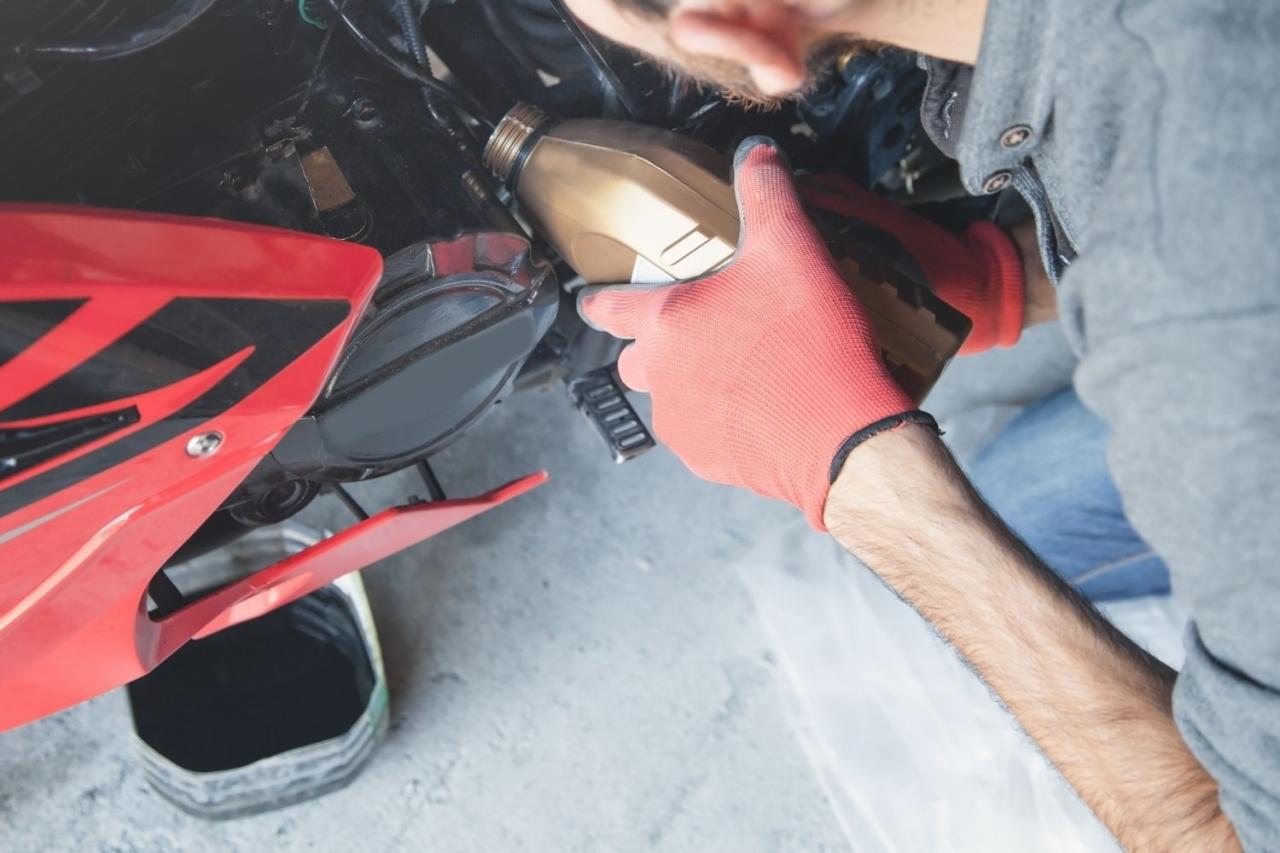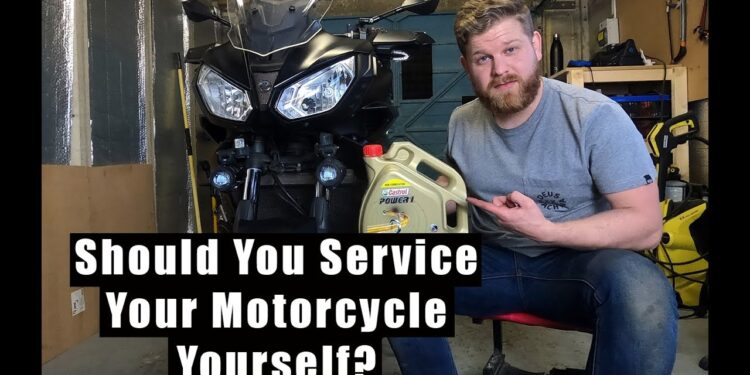Embark on the journey of DIY motorcycle servicing at home with this detailed guide, packed with essential tips and insights to help you maintain your bike like a pro. From basic maintenance tasks to troubleshooting common issues, this narrative will equip you with the knowledge needed to keep your motorcycle in top condition.
Preparation for DIY Motorcycle Servicing
When it comes to servicing your motorcycle at home, proper preparation is key to ensure a smooth and successful process. This includes gathering the essential tools, wearing the necessary safety gear, and setting up a clean and organized workspace.
Essential Tools for Basic Motorcycle Servicing
- Socket set with various sizes
- Screwdrivers (flathead and Phillips)
- Pliers and wrenches
- Oil filter wrench
- Funnel for oil changes
- Chain lubricant and cleaner
- Tire pressure gauge
Importance of Safety Gear
Before starting any work on your motorcycle, it is crucial to wear the proper safety gear to protect yourself from any potential injuries. This includes:
- Helmet
- Gloves
- Eye protection
- Long sleeves and pants
- Sturdy closed-toe shoes
Preparing the Workspace
Creating a clean and organized workspace is essential for effective motorcycle servicing. Make sure to:
- Clear the area of any clutter and debris
- Use a sturdy workbench or stand to elevate the motorcycle
- Have good lighting for visibility
- Keep all tools and parts organized and within reach
Basic Maintenance Tasks

When it comes to maintaining your motorcycle at home, there are several common tasks that you can easily perform yourself. These tasks not only save you money but also help ensure the longevity and performance of your bike.One of the most essential maintenance tasks is changing the oil and oil filter.
This process is relatively straightforward and should be done regularly to keep your engine running smoothly. Additionally, checking and replacing the air filter is another crucial task that can improve your bike's performance and fuel efficiency.
Changing the Oil and Oil Filter
To change the oil and oil filter on your motorcycle, you will need the following tools and materials:
- New oil
- Oil filter
- Wrench
- Oil pan
- Funnel
- Rag
Here is a step-by-step guide on how to change the oil and oil filter:
- Start by warming up your engine for a few minutes to help the oil flow more easily.
- Locate the drain plug underneath your bike and place the oil pan underneath it.
- Use the wrench to loosen the drain plug and let the old oil drain into the pan.
- Once all the oil has drained, remove the old oil filter using the wrench.
- Before installing the new oil filter, apply a thin layer of oil to the rubber gasket.
- Install the new oil filter and tighten it securely with the wrench.
- Replace the drain plug and fill the engine with the recommended amount of new oil using the funnel.
- Check the oil level using the dipstick and adjust as needed.
- Dispose of the old oil properly at a recycling center.
Remember to consult your motorcycle's owner's manual for the specific type of oil and filter recommended for your bike.
Checking and Replacing the Air Filter
The air filter is responsible for filtering out dust and debris from entering your engine, so it's essential to keep it clean and replace it when necessary. Here is how you can check and replace the air filter on your motorcycle:
- Locate the air filter housing on your bike, usually found near the engine or under the seat.
- Remove the housing cover to access the air filter.
- Inspect the air filter for any dirt, dust, or damage. If it looks dirty or clogged, it's time to replace it.
- Take out the old air filter and replace it with a new one of the same size and type.
- Secure the housing cover back in place and ensure it is properly sealed.
By performing these basic maintenance tasks like changing the oil and oil filter, and checking and replacing the air filter, you can keep your motorcycle in top condition and enjoy a smoother and more efficient ride. Remember to follow the manufacturer's recommendations and guidelines for your specific bike model.
Inspecting and Adjusting Components

When it comes to maintaining your motorcycle, inspecting and adjusting key components is crucial to ensure optimal performance and safety on the road
Inspecting Brake Pads
- Start by removing the brake caliper to access the brake pads.
- Check the thickness of the brake pads - if they are worn down to the minimum thickness, it's time to replace them.
- Inspect for any signs of uneven wear or damage that may affect braking efficiency.
- Replace the brake pads if necessary, following the manufacturer's guidelines.
Checking and Adjusting Chain Tension
- Measure the chain tension by applying pressure to the chain at the midpoint between the sprockets.
- Adjust the tension by loosening the rear wheel axle nut, then turning the adjusters to achieve the correct tension.
- Ensure the chain is properly aligned and lubricated for smooth operation.
- Check the chain tension regularly to prevent premature wear and improve overall performance.
Inspecting Tires
- Check the tire pressure using a reliable gauge and adjust if necessary to the manufacturer's recommended PSI.
- Inspect the tires for any signs of wear, cuts, or bulges that may indicate the need for replacement.
- Check the tire tread depth to ensure adequate grip on the road surface.
- Rotate the tires regularly to promote even wear and extend their lifespan.
Troubleshooting Common Issues
When it comes to DIY motorcycle servicing, encountering common issues is inevitable. Knowing how to troubleshoot and fix these problems can save you time and money in the long run. Below are some common motorcycle issues DIY enthusiasts may face along with solutions and advice on when to seek professional help.
Starting Problems
One of the most common issues riders face is trouble starting their motorcycle. This can be caused by a variety of factors, such as a dead battery, faulty ignition system, or clogged fuel lines.
- Check the battery connections and charge level to ensure it is not the cause of the problem.
- Inspect the spark plugs and ignition system for any signs of damage or wear.
- Clean or replace clogged fuel lines and filters to ensure proper fuel flow to the engine.
Remember to always refer to your motorcycle's manual for specific troubleshooting steps and safety precautions.
Engine Overheating
Another common issue that DIY enthusiasts may encounter is engine overheating. This can be caused by low coolant levels, a malfunctioning thermostat, or a clogged radiator.
- Check the coolant levels and top up if necessary to prevent overheating.
- Inspect the thermostat for any malfunctions and replace if needed.
- Clean the radiator and ensure proper airflow to prevent overheating issues.
Regular maintenance and keeping an eye on your motorcycle's temperature gauge can help prevent engine overheating.
Seeking Professional Help
While many common motorcycle issues can be fixed with basic troubleshooting and DIY repairs, there are times when it's best to seek professional help. If you are unsure about the root cause of a problem, lack the necessary tools or expertise, or if the issue seems complex, it's recommended to consult a professional mechanic.
- If you encounter electrical issues or major engine problems, it's best to seek help from a professional to avoid causing further damage.
- When in doubt, don't hesitate to take your motorcycle to a trusted mechanic who can diagnose and fix the problem correctly.
Remember that safety should always be a top priority when performing any maintenance or repairs on your motorcycle.
Conclusion

As we conclude this guide on DIY motorcycle servicing at home, remember that with the right tools, knowledge, and safety precautions, you can tackle maintenance tasks with confidence. By following the steps Artikeld here, you'll be able to ensure your motorcycle runs smoothly and safely on the road.
FAQ Guide
Can I use regular tools for DIY motorcycle servicing?
It's recommended to use tools specifically designed for working on motorcycles to ensure precision and safety.
How often should I change the oil in my motorcycle?
Oil should typically be changed every 3,000 to 5,000 miles, but it's best to consult your motorcycle's manual for specific recommendations.
What should I do if my motorcycle won't start?
Check the battery, spark plugs, and fuel system first. If the issue persists, it might be time to consult a professional mechanic.
Is it safe to adjust the chain tension on my own?
As long as you follow the manufacturer's guidelines and use the right tools, adjusting chain tension can be done at home safely.
When should I seek professional help for motorcycle repairs?
If you're unsure about a repair task, facing complex issues, or lack the necessary expertise, it's best to consult a professional mechanic for assistance.














